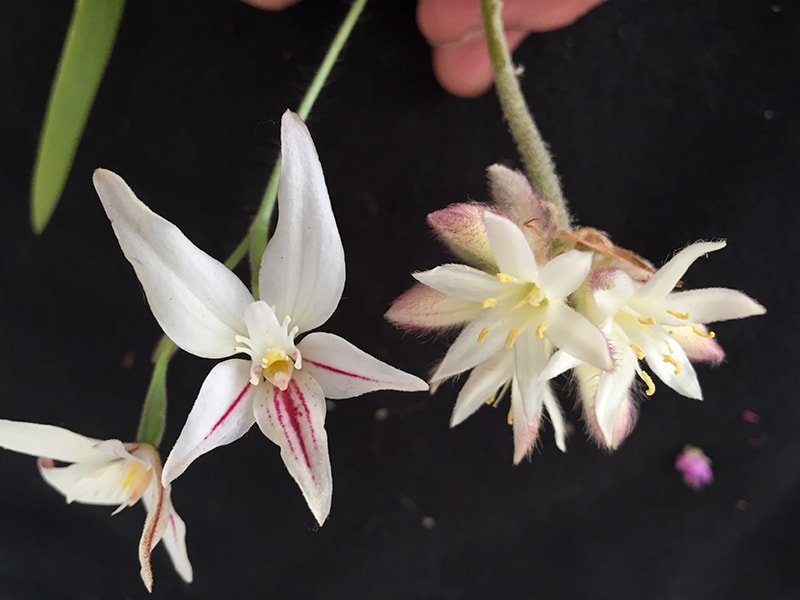Two new species of orchid discovered during bush walk

TWO NEW SPECIES of fairy orchid have been discovered by two esteemed botanists in south west Western Australia, a flower hotspot.
Curtin University (CU) professor Kingsley Dixon and Kew Garden scientist and CU Adjunct Lecturer, Maarten Christenhuez discovered the new species during a casual bushwalk near Lane Poole Reserve in the Darling Ranges, south of Dwellingup.
“While walking I kept seeing what I thought were just mutants of the usual yellow cowslip orchid. But after a few hours, all I kept seeing were these gorgeous rose-pink and white orchids everywhere until I sat and thought that these just had to be something different,” Professor Dixon said.
See more: GALLERY: the orchids of Australia
“I guess the orchids where saying – hey, I’m undiscovered, check me out.”
“The two new species are rare and were discovered in an area that is largely inaccessible which might explain how they have eluded discovery – up until now of course.”
The two new species of fairy orchid are yet to receive common names; however Professor Dixon has given both species a scientific name: Caladenia lateritica and Caladenia rosea.
“The C. lateritica is similar to the Conostylis setosa, known as a ‘white cotton tail,’ similar to kangaroo paws.
“The pink C. rosea looks like the stunning beautiful Swan River Myrtle, or the Hypocalymma robustum.
Professor Dixon added that, unlike their common scentless cousin the yellow cowslip orchid, both species have a “delightful” smell.

Caladenia lateritica. (Image Credit: Kingsley Dixon/Curtin University)
Conservation of Australian orchids
Australia has more than 1700 of the 25–30,000 species in the Orchidaceae family known globally, yet, regrettably, 25 per cent of orchid extinctions occur here.
See more: The wildflowers of Western Australia
For the C. lateritica and C. rosea the biggest challenge will be preventing future land clearing.
“Conserving these new species represents a challenge as the area it was found to be growing can often be subject to forest clearing, with many similarly high-plateau areas likely to have already been cleared.
“With discoveries like this, I hope that the Lane Poole Nature Reserve will be finally protected from any further clearing and loss of these magnificent forests – and who knows how many other species are yet to be found.”
READ MORE:




